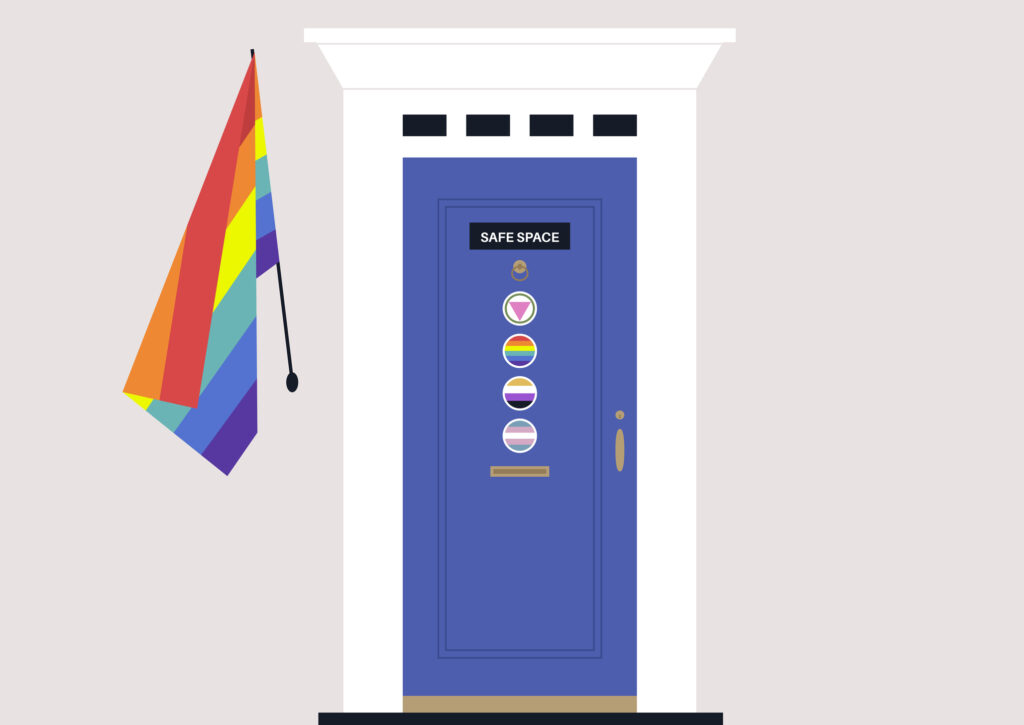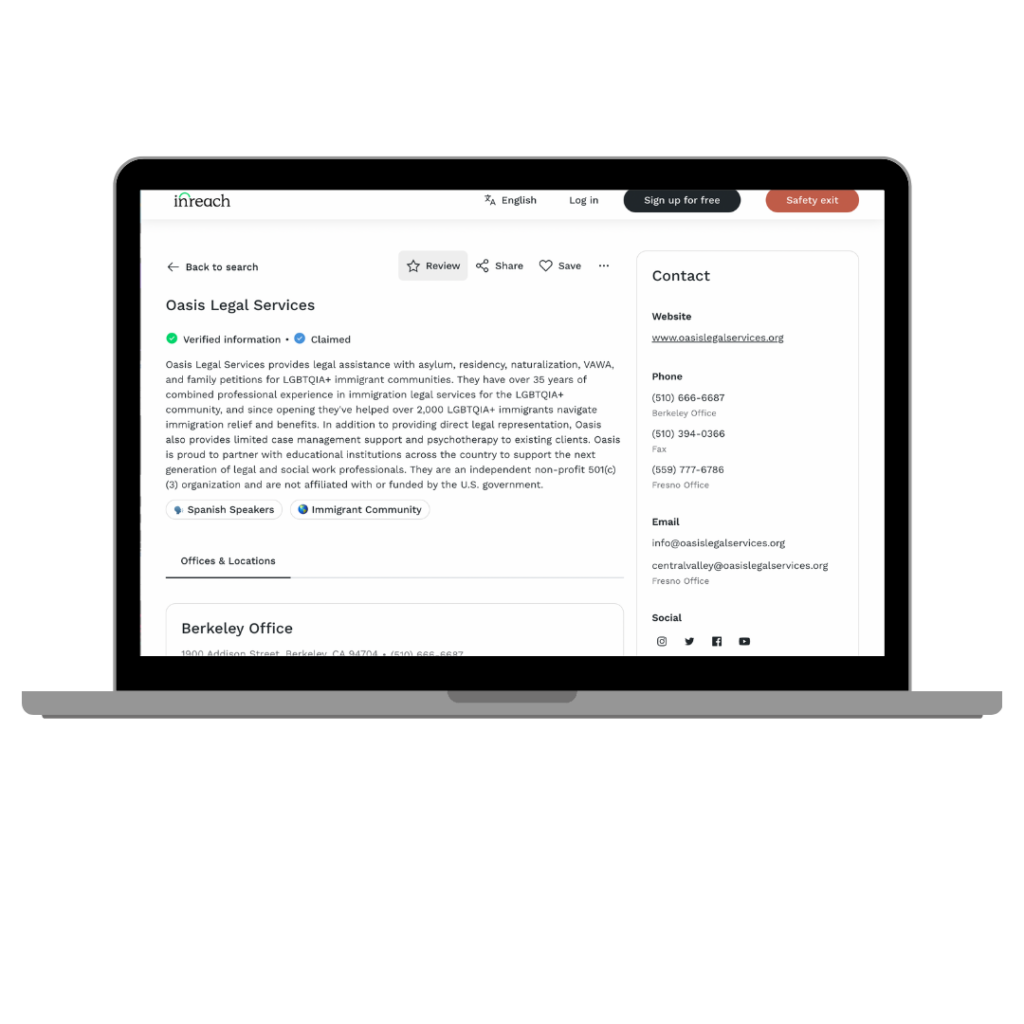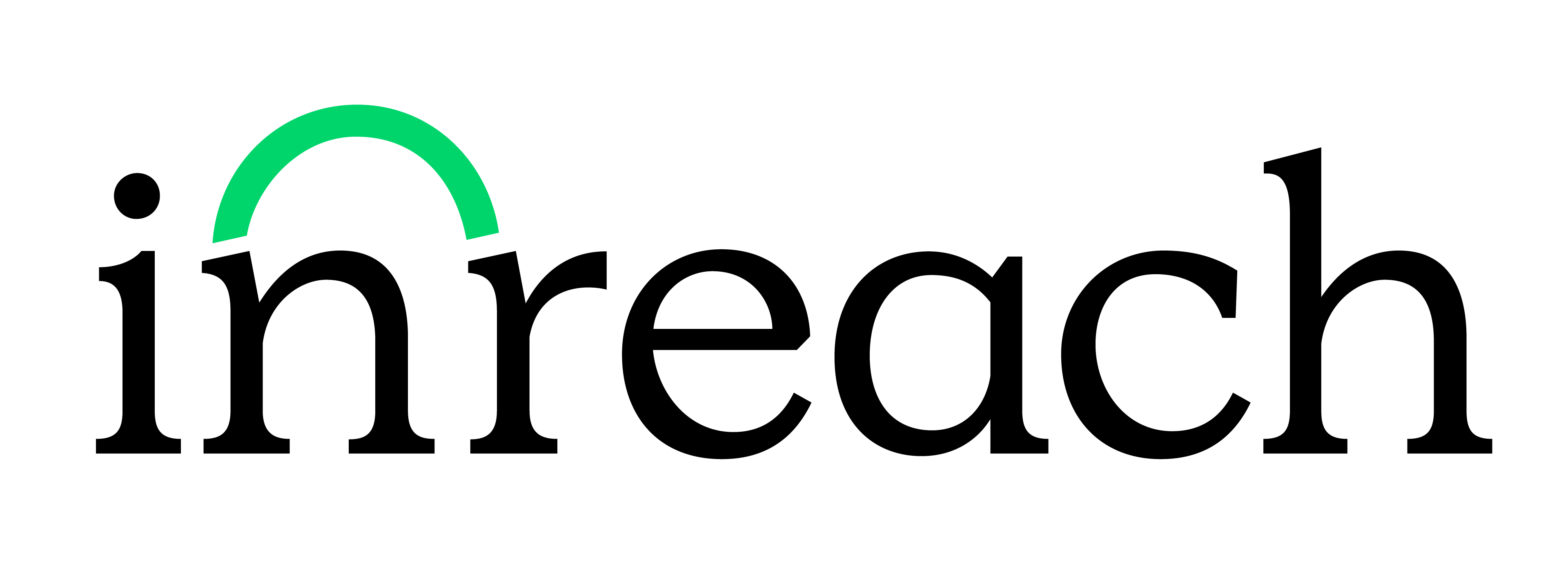No products in the cart.
Additional Questions?
If you have any additional questions, please feel free to reach out to us!
No products in the cart.
Every direct service provider listed on InReach is independently vetted by our trained volunteers to be a welcoming space for LGBTQ+ people facing persecution or discrimination.

Is the provider active and legitimate?
Is the provider LGBTQ+ affirming?
Does the provider meet any of InReach's intersectionality definitions?
We repeat our vetting process at least once every 6 months to ensure user safety.
InReach is built for the diverse and intersectional LGBTQ+ community – InReach’s free platform lists verified services for LGBTQ+ asylum seekers, refugees and other immigrants, BIPOC communities, the transgender and gender nonconforming (TGNC) community, youth and caregivers, and more LGBTQ+ communities in need of safe resources.
At InReach, we are dedicated to ensuring our free resource platform is filled with high-quality, accessible, and welcoming direct service providers for LGBTQ+ people facing persecution or discrimination. Our trained volunteers conduct a rigorous, tailored vetting process for every provider listed on InReach. Our core vetting criteria include:
At InReach, we understand that achieving LGBTQ+ equality requires trans justice, racial justice, refugee justice, reproductive justice, language justice, and more. Therefore, in addition to ensuring that each provider listed on InReach is generally LGBTQ+ affirming, our trained volunteers also verify whether providers are led by and/or have expertise in serving specific historically marginalized LGBTQ+ communities.
See our intersectionality definitions below for more information.
Our team ensures these criteria are met by thoroughly researching and often directly communicating with each provider. Every provider listed on InReach has regularly updated documentation on these core criteria. We also evaluate additional features we value in the providers we publish, such as whether they offer translation services for non-English speaking clients and whether they have a confidentiality policy for their services. At the end of our vetting process, providers are classified as either “verified” or “unverified.” Unverified providers are deemed ineligible for inclusion on InReach, at least for the time being.
Examples of things we look for during our vetting process include:
With our history in LGBTQ+ asylum, our organization was founded on the belief that every LGBTQ+ person deserves the safety and freedom to live authentically. We believe that achieving LGBTQ+ equality requires transgender justice, racial justice, refugee justice, reproductive justice, language justice, and more.
As a result, in addition to satisfying our general LGBTQ+ affirming verification criteria, we look for (prefer but do not require to be listed on InReach) organizations who are ‘led by’ and/or have services ‘focused on’ serving historically marginalized LGBTQ+ communities.
For example, we look for organizations who are led by those with relevant lived experience for LGBTQ+ people facing discrimination and persecution, such as organizations who are:
We also look for organizations who provide services that are focused on serving a specific marginalized LGBTQ+ population(s), including:
Great question! Our vision is to build a dynamic platform that incorporates regular community feedback, including from direct service providers listed on InReach.
The ability for organizations to “claim” their own profile on InReach is coming soon. Please check back here and follow us on social media (@weareinreach) for updates!
Please see below for our intersectionality definitions (introduced in January 2023) outlining how InReach defines which organizations are ‘trans led’, ‘BIPOC led’, ‘immigrant led’, etc. and what it means for an organization to offer a service ‘focused on’ a specific LGBTQ+ community.
Definitions List #1: Determining whether an organization meets any of InReach’s ‘led by” definitions
For consistency, InReach uses an adapted version of the Trans Justice Project definition of what it means to be ‘trans led’ for all of our community ‘led by’ definitions, as described below.
Definitions List #2: Determining whether an organization has a service(s) ‘focused on’ a specific LGBTQ+ community
A service is defined as focusing on a specific LGBTQ+ community if:
A service is defined as focusing on asylum seekers if the service:
A service is defined as focusing on resettled refugees if the service:
A service is defined as focusing on the immigrant community if the service:
A service is defined as focusing on Spanish speakers if the service:
A service is defined as focusing on the BIPOC community if the service:
A service is defined as focusing on LGBTQ+ youth if the service:
A service is defined as focusing on the HIV community if the service:
A service is defined as focusing on the transgender community if the service:
A service is defined as focusing on trans youth if the service:
A service is defined as focusing on transgender men and the trans masculine community if the service:
A service is defined as focusing on transgender women and the trans feminine community if the service:
A service is defined as focusing on the gender nonconforming community if the service:
We re-verify (repeat our tailored verification process described above) all of the direct service providers listed on InReach at least once every 6 months for maximum user safety and data quality control purposes.
In 2023, we switched from geography-based tiers for re-verifications to re-verifying organizations by time (i.e., ‘when last verified’).
Our trained interns carry out the bulk of our crucial re-verifications.
With increased capacity and support, we can continue to increase the frequency of our re-verifications to ensure our resource data remains up-to-date, 24/7. (Want to help? Make a tax-deductible donation today.)
See the green “Verified Information” badge (as shown below) on a direct service provider’s profile page to learn more about when the provider’s information was last updated by InReach’s trained volunteers.
The blue “Claimed” badge (as shown below) indicates when a profile page has been claimed by a verified representative of the organization.

If you have any additional questions, please feel free to reach out to us!
